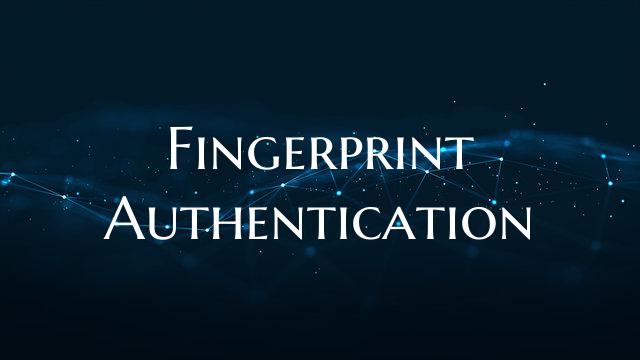Fingerprint Authentication
In today's digitally-driven era where online security is of paramount importance, fingerprint authentication has emerged as a cutting-edge solution that offers a blend of top-notch security and unparalleled convenience. Unlike traditional password-based systems that are prone to phishing attacks and user errors, fingerprint authentication leverages the unique biometric characteristics of an individual's fingerprint to verify their identity, making it one of the most secure forms of authentication available.
The process of fingerprint authentication involves capturing an individual's fingerprint using a fingerprint sensor, which then converts the unique patterns and ridges of the fingerprint into a digital template. This template is securely stored and used for comparison whenever authentication is required. The system compares the captured fingerprint with the stored template to verify the user's identity, granting access only if there is a match. This highly secure process ensures that only authorized individuals can gain access to sensitive information or secure locations.
One of the key advantages of fingerprint authentication is its convenience. Users no longer need to remember complex passwords or worry about their credentials being stolen or hacked. With a simple touch of a finger, users can quickly and securely access their devices, applications, or even make secure payments. This streamlined authentication process not only enhances user experience but also saves time and effort.
Moreover, fingerprint authentication offers a higher level of security compared to traditional authentication methods. Since each person's fingerprint is unique and cannot be replicated, the chances of unauthorized access are significantly reduced. This makes fingerprint authentication ideal for protecting sensitive data, personal information, and financial transactions from cyber threats and identity theft.
With the increasing adoption of fingerprint sensors in smartphones, laptops, and other devices, fingerprint authentication has become more accessible and widespread. Many organizations and industries, including banking, healthcare, and government sectors, are increasingly leveraging this technology to fortify their security measures and protect sensitive information.
In conclusion, fingerprint authentication is revolutionizing the way we secure our digital identities, offering a robust combination of security, convenience, and efficiency. As technology continues to advance, fingerprint authentication is poised to become an indispensable tool in safeguarding our digital assets and ensuring a seamless user experience in the ever-evolving digital landscape.

